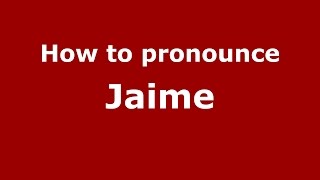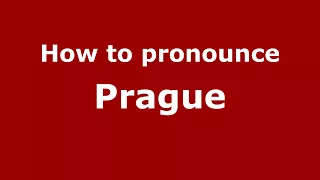How to pronounce Kiridena? | |
| 1 entry | |
Pronunciation of Kiridena
Phonetic Spelling:[ Kinda Sir Prise ]
Type of Name:
Last
Language:
Ferrero
Meaning:
Chocolate
Additional Information:
Each Kinder Surprise egg consists of a chocolate shell, a plastic container, the contents of said container, and an external foil wrap.
The chocolate shell is shaped like a chicken's egg. It is only about a millimeter thick, and consists of two layers: a milk chocolate layer on the outside, and a white chocolate layer on the inside. The shell is not a singular piece of material, but rather two identical halves split down a vertical line. These are lightly fused together just before the egg is wrapped, to prevent the halves from coming apart under the light pressures expected during transportation.
During the egg's production, before the halves are fused together, the plastic capsule containing the toy is placed inside. This capsule is made from thin, flexible plastic, and is often yolk-yellow (though in the past it was manufactured in a variety of colors). The capsule is made of two non-symmetrical, overlapping pieces: its bottom piece is almost as long as the entire capsule, and has two ridges protruding along its outer rim; the top piece is about half as long as the entire capsule, and has two corresponding ridges along its inner rim. When the pieces are pushed together, the ridges interlock and do not come apart without manual manipulation. To separate the two pieces, it is often necessary to apply pressure to the interlocking region at its opposite ends, bending it and causing the ridges to separate inside so that the halves can be pulled apart. Once the capsule is opened it can be re-closed effortlessly by pushing the two pieces back together.
The plastic capsule contains the toy itself (either in a single piece or in several pieces requiring assembly) and at least two pieces of paper. One paper lists the "choking hazard" warnings in multiple languages. The other paper shows assembly instructions for the toy and a picture of the assembled toy (if applicable), and/or an illustration of all toys belonging to the same line as the one contained within this particular capsule. Furthermore, many capsules include a small page of adhesive decals that may be placed on the assembled toy after construction.
Once the egg is assembled in the factory, it is wrapped in a thin metal foil bearing the Kinder Surprise brand name and various production details. The eggs may then be sold in any of a number of forms, often either individually or as a boxed set of 3 eggs. Some retailers will sell a tray of eggs containing 24 eggs in total.
Assembly of the toys requires no additional tools, as the pieces will simply lock ("snap") together. Assembly rarely takes more than a few simple steps. Most toys can be disassembled and reassembled freely, while a few cannot be disassembled without causing permanent damage. Over the years, Ferrero have also created a variety of no-assembly toys, whether more complex toys that can be used immediately or simple character statuettes made of a single, pre-painted piece of hard plastic.
During the 2000s, Ferrero redesigned the Kinder Egg's internal plastic capsule. The new design is visually and functionally similar to that of the original capsule, but it now consists only of a single piece of plastic with a hinge on one side. The size and specific design of each half of the capsule have also been slightly altered accordingly. The new capsule design is always made from yolk-yellow plastic.
Overview
Kinder Surprise originated in 1974 in Italy as Kinder Sorpresa. The concept of introducing a toy in a chocolate seems to have originated in Argentina in 1962, with the introduction in the market of "Jack" chocolate by the FelFort company.[citation needed]
The toys are designed by both inside designers and external freelancers (for example the French artist André Roche based in Munich) and manufactured by many companies worldwide, such as Produzioni Editoriali Aprile, a small company based in Turin, Italy, run and founded by two brothers, Ruggero and Valerio Aprile.
Kinder Eggs are sold all over the world, including the United States, where they are sold at the European Markets and Russian Deli stores.
In Europe they have become a minor cult phenomenon among adults. There is even a thriving collector's market for the toys. There are many types of toys available, but some of the most popular with collectors include the ever-changing series of small hand-painted figures (some have to be assembled); cartoon characters; metal figures; and jigsaw puzzles. Seasonal eggs are introduced around the holidays, such as the limited-edition creche collections (featuring such characters as the three kings, baby Jesus, and assorted barnyard animals) found around Christmas, and the huge ones found at Easter (extremely popular in Italy).
A relatively new innovation, triggered by the advent of the Internet, is the introduction of "Internet surprises". Accompanying the toy is a small slip of paper containing a "Magicode". This code gives access to games at the Magic Kinder website, some for downloading, some for playing online.
Classification and identification
Classifying and identifying Kinder Surprise toys is a rather complex exercise. There are several different lines, and a number of different numbering systems have been used over the years. Until the 1990s, the toys were seldom numbered at all, which can make identification difficult (although some early toys, especially hand-painted figurines, have a Ferrero mark). Kinder history can be broadly split into two periods: pre-2004 and post-2004. The pre-2004 toys were made by Ferrero. But in 2004, a Luxembourg-based company called MPG (which stands for Magic Production Group) took over toy production, although Ferrero continues to make Kinder Surprise chocolate.
In recent years, there have also been reproductions of older toys, which Kinder collectors frequently refer to as "recasts".[1] These "recasts" first appeared in Poland, but soon spread to other Central European countries and eventually to Canada, Mexico, South America, Australia and New Zealand. They have very similar papers to the original releases, but the numbering is slightly different. For example, a "recast" of K93 No. 81 is simply numbered "No. 81". Both the toys and papers have this altered numbering. Recasts are not very popular with collectors, but they are nevertheless sought after by completists.
Limited editions
In addition to the regular collectible toys, Kinder Surprise series generally contain special limited-edition sets. These sets tend to vary greatly between countries, with many variations in toys, but more especially papers, which tend to be unique to the specific countries in which the sets are released. Some sets are released in many countries, while others are only issued in one or two.
Hand-painted figurines are solid toys that generally do not require assembly. They are for younger children, but older people have been known to keep and collect the Kinder Egg Surprise toys. They are very popular with collectors. They can be broadly divided into two types: animal themes and cartoon characters. The earliest sets were released only in Germany and Italy, but after about 1993, they were released in many different countries. There have been many sets of metal figures, the majority of them being soldiers, issued since late 1970.
Also, sets such as the 5 out of 5 aeroplanes have only been sold in the airports.[2]
Controversy
United Kingdom
In 2000, the parents of three children in the United Kingdom, who died after choking on toys inside edible eggs, campaigned for the products to be withdrawn from the European Union.[3] Two children worldwide have died from choking on parts of the Kinder toy surprises a few days after they had eaten the chocolate egg; a third was attributed to another manufacturer’s product.[4]
Defenders of the chocolates said that these had been unfortunate fatalities. This was discussed in the UK House of Commons[5][6][7] and also by the UK Department of Trade and Industry which said, "The child’s tragic death was caused by the ingestion of a small part of the egg’s contents. Many other products and toys with small parts are available in the market place. If we were to start banning every product that could be swallowed by a child, there would be very few toys left in the market”.[8]
United States
The 1938 Federal Food, Drug, and Cosmetic Act contains a section highlighting that a confectionery product with a non-nutritive object, partially or totally embedded within it, cannot be sold within the United States, unless the FDA issues a regulation that the non-nutritive object has functional value.[9] Essentially, the 1938 Act bans “the sale of any candy that has embedded in it a toy or trinket”.[10]
In 2012, the FDA re-issued their import alert stating “The embedded non-nutritive objects in these confectionery products may pose a public health risk as the consumer may unknowingly choke on the object”.[11]
In 1997, the staff of the CPSC, the Consumer Product Safety Commission, examined and issued a recall for some Kinder Surprise illegally brought into the US with foreign labels.[12] The staff determined that the toys within the eggs had small parts. The staff presumed that Kinder Surprise, being a chocolate product, was intended for children of all ages, including those under three years of age. On this basis, the staff took the position that Kinder Surprise was in violation of the small parts regulation and banned from importation into the US.[12]
Kinder Surprise bears warnings advising the consumer that the toy is “not suitable for children under three years, due to the presence of small parts” and that “adult supervision is recommended”.[13]
In January 2011, U.S. Customs and Border Protection (CBP) threatened a Manitoba resident with a $300 (Canadian dollars) fine for carrying one egg across the U.S. border into Minnesota.[14] In June 2012, CBP held two Seattle men for two and a half hours after discovering six Kinder Surprise eggs in their car upon returning to the U.S. from a trip to Vancouver. According to one of the men detained, a border guard quoted the potential fine as US$2,500 per egg.[15]
On December 26, 2012, a petition was created on the White House website through the "We The People" campaign to end the ban on the import and sale of Kinder Surprise Eggs in the United States. However the petition failed to meet the required number of signatures by January 26, 2013, and was therefore declined.
Other Kinder Surprise egg types
In addition to the main line of Kinder eggs, giant-sized Kinder eggs known as "Maxi eggs" are also manufactured. They include toys bigger than the regular-sized kind.
-
Helpful
-
Send us corrections
-
Comments 0
Similar sounding names
Top YouTube videos in last 7 days

|
How to pronounce Ketanji Brown Jackson
5,008 Views |

|
How to pronounce Sian
3,956 Views |

|
How to Pronounce Hughes
3,943 Views |

|
How to Pronounce Joaquin
3,832 Views |

|
How to Pronounce Jaime
2,515 Views |

|
How to Pronounce Piotr
2,503 Views |

|
How to Pronounce Prague
2,922 Views |